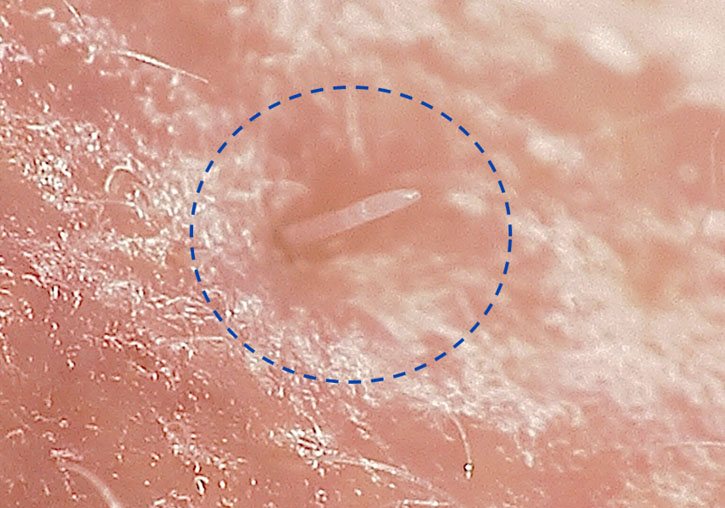Users
Social media
- More details here...
- Address
Parc Científic de la Universitat de València C/
Catedrático Agustín Escardino, 9
46980 Paterna (Valencia) Spain - Email:
iu.i2sysbio@uv.es - Phone:
(+34) 963544810
- Address
Links
The University participates in the first complete study of the DNA of the Demodex folliculorum mite, the only animal that lives in symbiosis with the human body

Investigation
The University participates in the first complete study of the DNA of the Demodex folliculorum mite, the only animal that lives in symbiosis with the human body

The University of Valencia (UV), together with the Foundation for the Promotion of Health and Biomedical Research of the Valencian Community (Fisabio), the Higher Council for Scientific Research (CSIC) and the Center for Biomedical Research Network (CIBER), has participated in the first genome sequencing study of the mite Demodex folliculorum, the only animal that lives in symbiosis with the human body. The research, published in the journal Molecular Biology and Evolution, has been led by Bangor University and the University of Reading.
These are mites that are transmitted at birth, are carried by almost all humans and their number reaches a maximum in adults as the pores grow. They measure about 0.3 mm long, are found in the hair follicles of the face, nipples and eyelashes, and feed on the sebum naturally released by the cells in the pores. They activate at night and move between the follicles in search of mating.
One of the main results of the work is that this mite survives with a minimum number of genes. “The loss of essential DNA repair genes and the lack of exposure to possible partners that could add new genes to their offspring may have led D. folliculorum to an evolutionary dead end and possible extinction,” explains Andrés Moya, researcher in the Genomics and Health Area of Fisabio, professor of Genetics at the University of Valencia and signatory of the article. The expert also adds: "although these phenomena were already known to occur in symbiotic bacteria, the study demonstrates it for the first time in animal eukaryotes." Amparo Latorre, professor of Genetics at the UV, also participates in the article.
Alejandra Perotti, professor of invertebrate biology at the University of Reading, who co-directed the research, states that "these mites have a different arrangement of genes than other similar species, because they have adapted to a protected life within the pores. These changes in their DNA have given rise to some body characteristics and behaviors. unusual.”
The work explains that, due to their isolated existence, without exposure to external threats, without competition to infest hosts and without encounters with other mites with different genes, genetic reduction has caused them to become extremely simple organisms with tiny legs powered by only 3 unicellular muscles. They survive with the minimum repertoire of proteins, the lowest number ever seen in this species and other related ones.
This genetic reduction is also the reason for their nocturnal behavior, according to the results of the study. The mites lack ultraviolet protection and have lost the gene that causes the animals to wake up in daylight. They are also not capable of producing melatonin, a compound that makes these small invertebrates active at night. However, they are able to fuel their nocturnal mating sessions using the melatonin that human skin secretes at dusk.
The research also explains that their unique genetic disposition gives rise to the mites' unusual mating habits. Their reproductive organs have moved forward, and males have a penis that protrudes upwards from the front of their body, meaning they have to position themselves underneath the female when they mate, and copulate while both cling to human hair.
Another of the research findings is that one of their genes has been inverted, giving them a particular arrangement of mouth appendages that protrude to pick up food. This helps their survival at a young age.
In addition, these mites have many more cells at a young age compared to their adult stage. This contradicts the previous assumption that parasitic animals reduce their cell number early in development. Researchers maintain that this is the first step for mites to become symbionts.
To date, some studies have assumed that mites do not have an anus and, therefore, must accumulate all their feces throughout their lives before releasing them when they die, which causes inflammation of the skin. However, this study confirms that they do have an anus, which is why many skin conditions have been wrongly attributed to them.
Article: Gilbert Smith et al. "Human follicular mites: Ectoparasites becoming symbionts." Molecular Biology and Evolution, msac125 Demodex folliculorum alt="previous">




